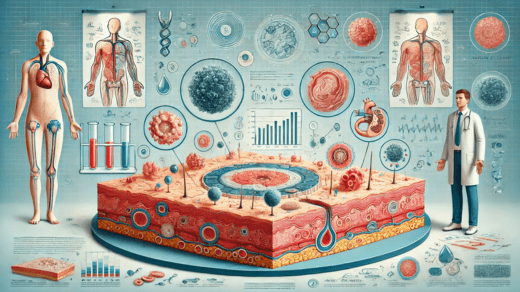Wound healing is a complex biological process that involves multiple stages, from clotting and inflammation to tissue growth and remodeling. One of the key components in facilitating this healing process is the use of effective wound dressings. These dressings not only protect the wound but also create an optimal environment that promotes faster and more efficient healing. In this article, we will explore the science behind wound dressings and how they aid in the healing process, ensuring the best possible outcome for various types of wounds.
1. Understanding the Stages of Wound Healing
Before delving into how wound dressings work, it’s important to understand the basic stages of wound healing. Healing typically occurs in four overlapping phases:
- Hemostasis (Clotting): Immediately after an injury, the body works to stop the bleeding. Platelets gather at the wound site, form a clot, and seal the blood vessels.
- Inflammation: The body initiates the inflammatory response, where white blood cells clear the wound of bacteria, debris, and damaged tissue.
- Proliferation: New tissue begins to form, including new blood vessels, collagen, and skin cells. This phase focuses on tissue regeneration and wound contraction.
- Maturation/Remodeling: The final phase, where collagen fibers reorganize to strengthen the tissue, and the wound gradually gains its final strength and appearance.
Throughout these stages, wound dressings play a critical role in ensuring the optimal conditions for healing.
2. Creating a Moisture-Rich Environment
One of the primary benefits of modern wound dressings is their ability to maintain a moist healing environment. This is critical because moist wounds tend to heal faster than dry ones. When the wound is kept moist, the tissue cells can migrate more easily across the surface, accelerating the healing process. In fact, research has shown that moist environments can reduce scarring and minimize the formation of scabs, which can impede the healing process.
Wound dressings such as hydrocolloid, hydrogel, and alginate dressings are designed to provide moisture to the wound while absorbing exudate (fluid) produced by the injury. These dressings create a “waterproof” barrier while preventing the wound from drying out, which in turn supports faster tissue regeneration and reduces the risk of infection.
3. Protection from Infection
Infections are one of the major obstacles to proper wound healing. When a wound becomes infected, it delays the healing process and can lead to complications like abscess formation, septicemia, or chronic wounds. Effective wound dressings help prevent infection in several ways:
- Bacterial Barrier: Many modern wound dressings, particularly antimicrobial dressings, have properties that act as a barrier against bacterial contamination. Some dressings are impregnated with antimicrobial agents like silver or iodine, which have been proven to kill or inhibit the growth of bacteria at the wound site.
- Sealing the Wound: Certain dressings, like transparent film dressings or foam dressings, are designed to completely seal the wound, preventing bacteria from entering while still allowing the wound to breathe. This helps to maintain the proper moisture level while offering protection from external contaminants.
4. Absorption of Excess Fluid
Wounds, especially those that are large or deep, often produce excess fluid (exudate) as part of the healing process. If the wound dressing cannot adequately absorb this fluid, it can become saturated and lead to maceration, a condition where the surrounding skin becomes soft and damaged. Effective wound dressings have high absorbency and wick away the excess fluid from the wound, keeping the surrounding tissue dry and preventing maceration.
Materials like foam dressings, alginate dressings, and hydrocolloid dressings are particularly useful for managing high levels of exudate. These dressings allow the fluid to be absorbed without causing a mess or discomfort to the patient.
5. Reducing Pain and Discomfort
Wounds can be painful, especially when they are exposed to air, friction, or pressure. An effective dressing not only protects the wound but also minimizes pain and discomfort during the healing process.
- Soft, Non-Adherent Dressings: Dressings like non-stick gauze or silicone dressings are designed to protect the wound from the outside world without sticking to the wound bed. This minimizes pain during dressing changes and prevents further trauma to the healing tissue.
- Pressure Relief: For wounds that are subject to pressure, such as pressure ulcers, foam dressings can help distribute pressure evenly across the wound, reducing pain and discomfort while promoting healing.
6. Promoting Autolytic Debridement
Autolytic debridement refers to the natural process by which the body breaks down and removes dead or necrotic tissue from the wound. Certain types of wound dressings, particularly hydrocolloid and hydrogel dressings, can aid in this process by creating a moist environment that facilitates the body’s ability to liquefy and remove the dead tissue.
Autolytic debridement is a gentle, self-regulated method of cleaning the wound that reduces the need for painful manual removal of necrotic tissue. By encouraging this natural process, these dressings promote faster healing and can help reduce the risk of infection.
7. Types of Effective Wound Dressings
Several types of wound dressings are available, each designed to meet the specific needs of the wound. The choice of dressing depends on the type of wound, its location, and the level of exudate. Here are some commonly used effective wound dressings:
- Hydrocolloid Dressings: These dressings are great for managing light to moderate exudate and help maintain a moist wound environment while offering a barrier against bacteria.
- Hydrogel Dressings: These are ideal for dry or necrotic wounds, as they provide moisture and help soften the dead tissue, promoting autolytic debridement.
- Alginate Dressings: Made from seaweed, these highly absorbent dressings are perfect for wounds with heavy exudate, as they help to absorb moisture and control the environment.
- Foam Dressings: These are absorbent and provide cushioning, making them ideal for larger wounds or those under pressure.
- Silver-Infused Dressings: These antimicrobial dressings are designed to help prevent infection, especially in high-risk wounds, like burns or surgical sites.
Wound dressings play an essential role in facilitating the healing process by creating an optimal environment for recovery. By maintaining moisture, protecting the wound from infection, absorbing excess fluid, and reducing pain, effective wound dressings contribute significantly to faster and more efficient healing. Understanding the science behind these products can help you choose the right dressing for a specific wound, ensuring the best possible outcome. Whether dealing with a minor cut or a more severe injury, investing in the right wound dressing can make a world of difference in the healing process. Take care of your elderly relatives and search for fixing pants for adults if they are needed.
Some funeral agencies offer not only cremation. They offer different services like care for elderly, too.

